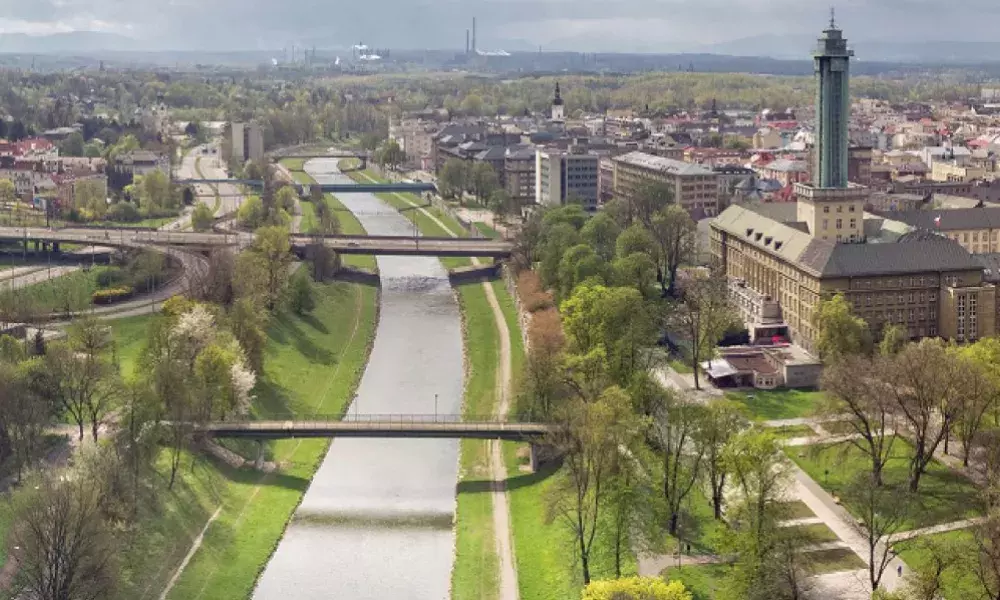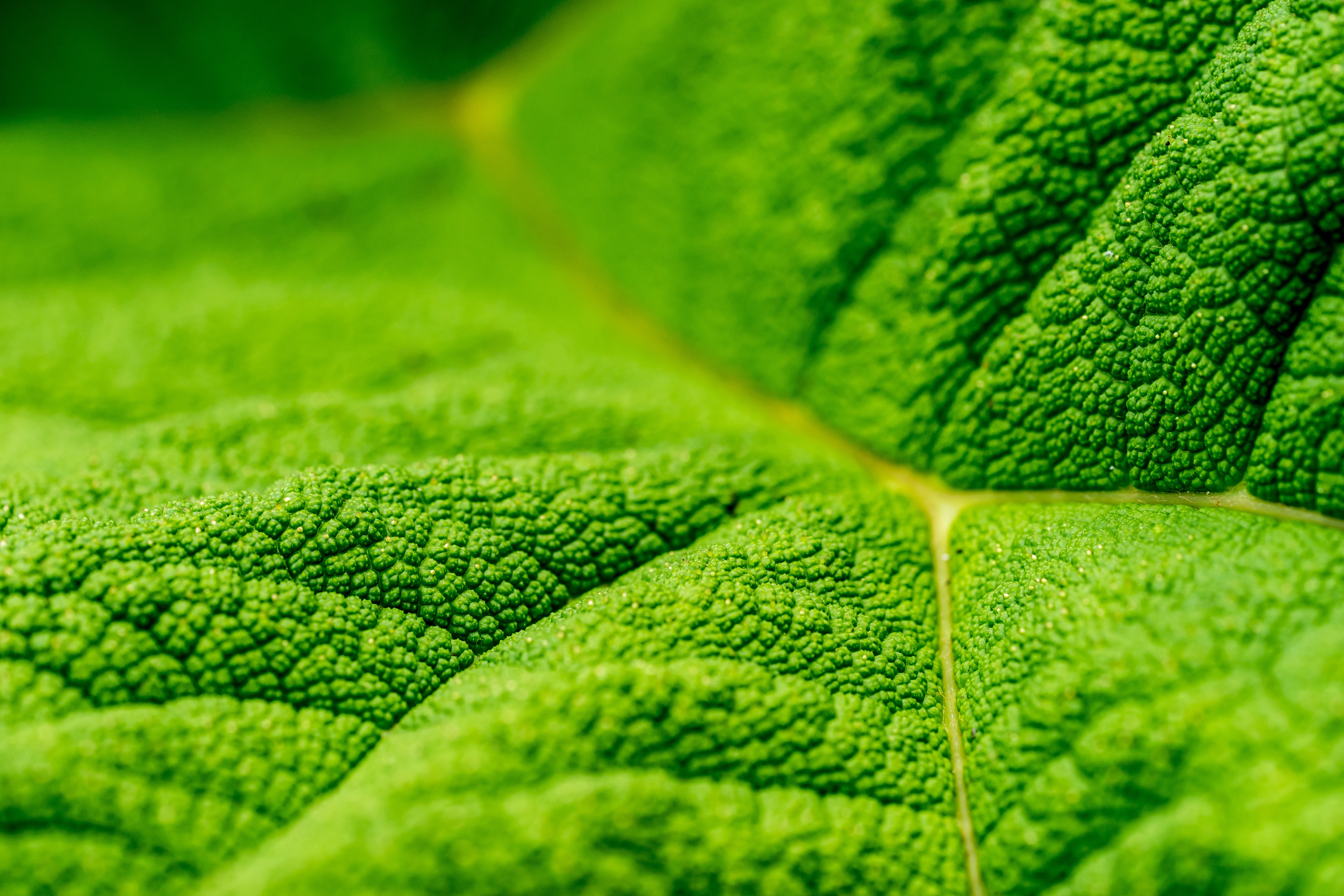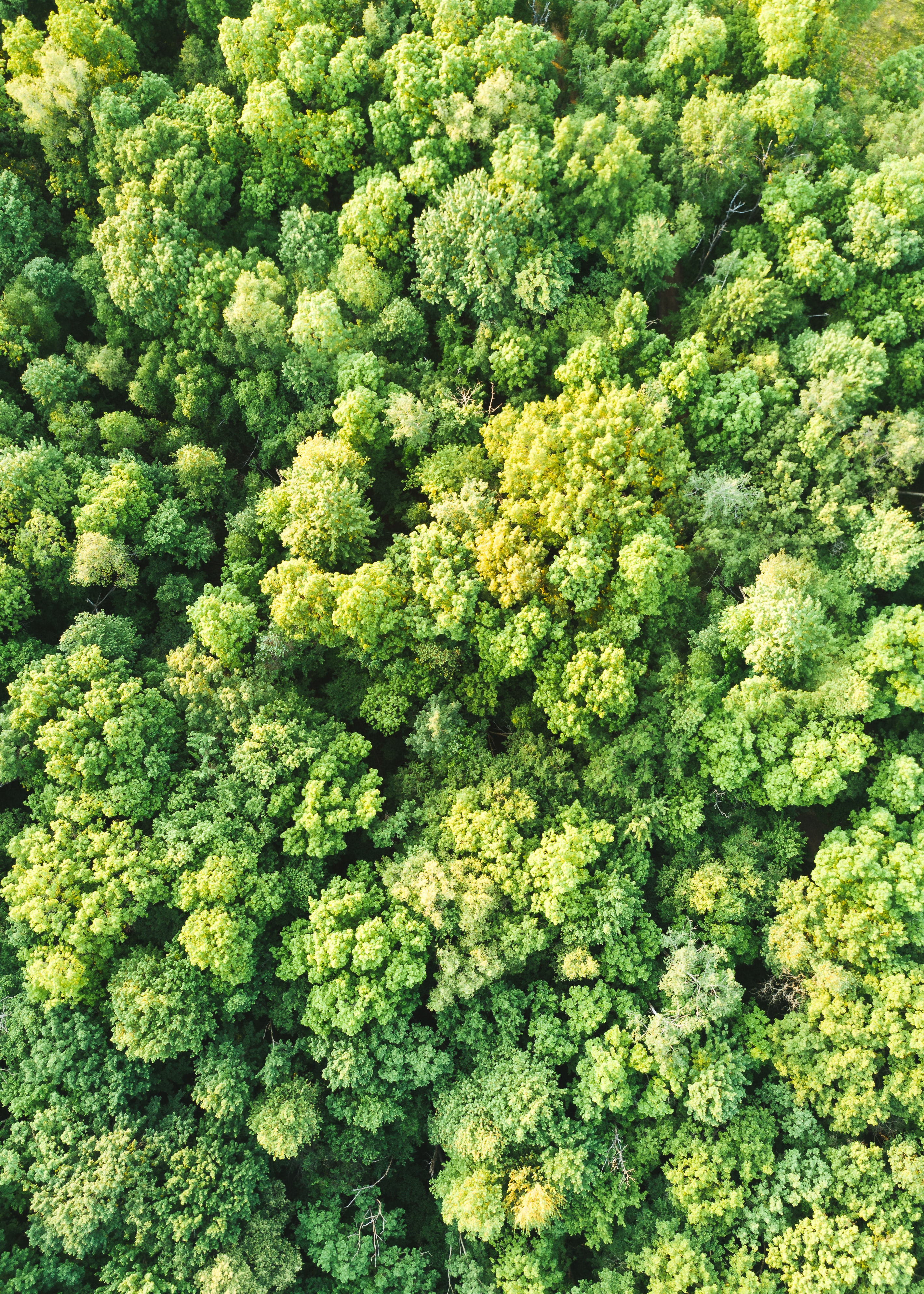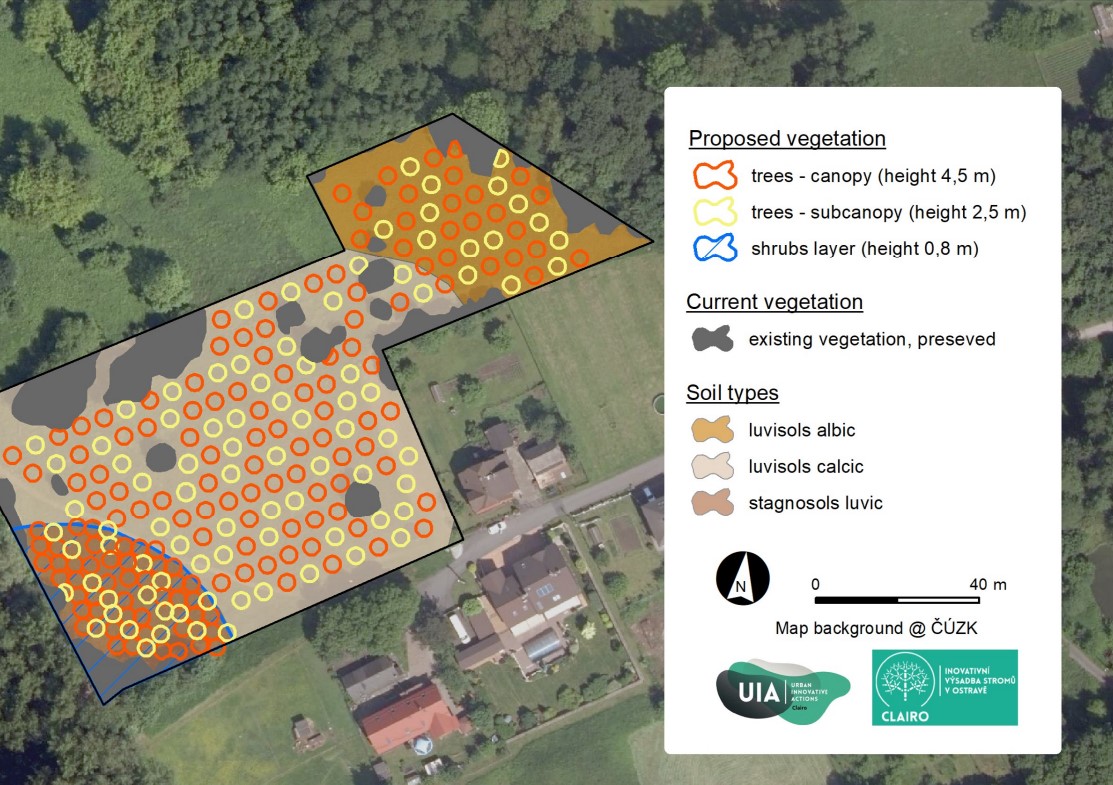
The CLAIRO project aims to tackle the air quality issue in Ostrava. Under the project new greenery will be planted in the city to provide air quality improvements. Milos Zapletal, Vít Kaspar and Pavel Samec from the Silesian University in Opava created the detailed design of the greenery structure and composition for the two target areas of the project. Planning was a complex and lengthy process since a range of variables needed to be born in mind to get to the point to identify the most appropriate species for the new plantations.
But exactly how plants support air quality improvements? Greenery can help reduce concentration of pollutants and most of all particulates in two main ways.
Vegetation plays an important part in controlling the flow and distribution of air pollutants through dispersion. The greenery introduces turbulence, and as a result the concentrated cloud of pollutants get dispersed and diluted in the air.
Another fraction of the pollution is removed through deposition, when pollutants stick to the surface of the leaves. Due to its relatively large surface area, plant canopy functions as a sink for particulate matter. Waxy, hairy leaves of trees and shrubs increase the rate of deposition. Vegetation serves as an effective windbreak, and as a result on the downwind side due to a decrease in airflow, suspended particles are deposited on the ground and their concentration in the air is reduced. In addition, to some extent plant leaves can assimilate pollutants and microbes on leaf surface or within leaves can biodegrade or transform pollutants into less toxic molecules.
Trees can improve air quality also indirectly, through reducing temperatures. A local decrease in air temperature can lead to a reduction of concentration of harmful air pollutants and in particular, to the reduction of photochemical reactions leading to ozone formation mainly due to the effect of shading surfaces and increased air humidity.
Which are the best tree species to reduce air pollution?
Some trees are far more effective at trapping air pollutants than others. A number of vegetation traits needs to be considered for the selecting appropriate plant species for pollutant capture.
The filtering activity of trees depends mainly on the canopy size. Not surprisingly, larger canopies can trap more pollutants than smaller ones. The density of the foliage is a key factor as it actually determines the vegetation area available for deposition. The density of a tree is influenced by the branching of the crown and the characteristics of the leaves. Apart from the height of a tree and foliage density, the shape of the crown is also relevant. A spherical crown for instance is found to be more effective than one with a pyramid shape. Mature trees with dense multi-storey connections are significantly more efficient in removing pollutants compared to low vegetation that consists only of a herb layer.

Foliage longevity is another important aspect. As opposed to deciduous trees, which lose their leaves during winter, evergreen species can act as year-round filters. However, evergreen species may be more sensitive to certain environmental stressors, such as draught and heat. Among deciduous species those ones are preferable that exhibit longer in-leaf seasons.
Although larger canopies can trap more particles than smaller ones, there is an indication that leaf size also matters. Species with smaller leaves tend to be more effective than ones with larger leaves. Conifers with their dense canopy of needles seem to support more effectively deposition of particulates than deciduous species.
The features of leaf surface also influence the filtration potential of plants. Rough, hairy and rugged surfaces that include grooves and ridges act as the best biofilters for particulates. The stickiness of the leaves was also found to be significant in trapping particulates to both conifers and deciduous trees.
A database of plants to support the design of green infrastructure for improved air quality
An online database of plants is being developed by the Silesian University in Opava of selected tree species with higher tolerance to air pollution and a stronger ability to capture pollutants.
The database will include a number of relevant parameters, including among others plant classification, the ecological zone, climatic requirements, sensitivity to acid deposition, sensitivity to ozone and the ability to remove dust particles.
Vít Kaspar has highlighted that since the database is targeted to landscape designers, urban planners and other urban practitioners working across in Europe, it includes not only species native to Czech Republic, but also plants from other biogeographical regions.
Defining an appropriate composition and structure of the vegetation
Various beneficial vegetation traits that influence capture efficiency does not automatically make certain plant species fit for any context. Simply selecting tree species that have a high potential for air pollution mitigation will not lead to desirable results. Since complex, well-functioning urban ecological systems need to be established at the two target sites in Ostrava, the focus should not be solely on filtration efficiency and individual trees.
During planning, one has to ask whether the preferred species will thrive under given environmental conditions. First of all, the selected plants must be adapted to local topographical, soil and climatic conditions.
Milos Zapletal stresses that plant diversity is also a decisive factor. Greater species diversity leads to greater ecosystem health and resilience to environmental stresses. When defining species composition, the ecological links among various plant species also need to be considered. A holistic understanding of ecosystems is required for the appropriate design of new plantations.
In the light of these aspects, Milos Zapletal, Vít Kaspar and Pavel Samec works with the assumption that a combination of multiple species of both deciduous and coniferous plants with an overall higher species diversity is suitable for a more efficient control of a wider range of pollutants.

The filtration of pollutants is influenced significantly by the vertical layering of forests. As a larger surface of the green mass leads to a higher rate of pollutant capture, a multiple-level tree cover is foreseen for the new plantations. The planned vegetation structure in Ostrava includes multiple floors with trees complemented by shrub floors in the undergrowth.
During planning, sensitivity of the proposed greenery to the air pollution also needs to be taken into account. As the target sites are located in an industrial area with increased concentration of air pollutants, preference was given to species with increased tolerance to air pollution. To make things even more complicated, the sensitivity of individual plant species to pollutant concentrations varies significantly. Especially in zones with high concentrations of ground-level ozone, it is essential to select species tolerant to this type of pollution. Sensitivity of plants is a key aspect, but in an area with poor air quality the health of an ecosystem is also crucial for long-term resilience.
In view of all these aspects, planning an urban forest for improving air quality is like piecing together a jigsaw puzzle that requires the assembly of all the interlocking pieces to eventually produce a complete picture. It is a complex process, in which capture efficiency of species, local environmental conditions, ecological links and ecosystem health, vegetation layers and sensitivity of greenery to air pollution should all need to be considered.
Designing greenery for the target sites in Ostrava
Taking into account all these variables, the team of the Silesian University in Opava developed the detailed design of the greenery structure and composition for the two target sites of CLAIRO. Communities of multiple plant species with similar ecological needs were specified that correspond to local habitat conditions. A multi-level tree cover will be created to maximise the capture of air pollutants. Preference was given to species with a dense branching and foliage, as well as to evergreen tree species that can catch pollution all year round. Exclusively native tree species were selected for planting.
In the larger part of the Radvanice site sessile oak will make up one third of the planted trees, supplemented by sycamore, large-leaved linden and field maple. In a smaller wetter part of the site water-loving species were selected.

The plot in Bartovice at the edge of a slag deposit area is a quite unfavourable habitat. As currently there are no vegetation elements in this area, pioneer tree species, such as European red pine, European larch and silver birch will have a vital role here.

In both sites different types of communities will be created in order to monitor their effectivity in trapping air pollutants.

The model developed under CLAIRO shows that in Radvanice the planned greenery will be quite effective, expected to capture twice as much particulates per leaf area than the original vegetation. The reason behind this is that while currently the area in Radvanice is mainly covered by low, grassy vegetation with the occurrence of some individual trees, the new greenery will include trees with different heights and shrubs, and even a young forest is more effective in trapping pollutants than the current vegetation. In the area in Bartovice, which is mainly covered by fly ash, sludge and building rubble, and where currently there is practically no vegetation, the change in pollutant capture will be even more significant.
This is actually a quite promising prospect. It needs only to be confirmed. Continuous air quality measurements undertaken in CLAIRO by the Technical University of Ostrava will help verify the impact of greenery on the reduction of air pollutants. The data gained through the measurements will also be vital for transferring project results to other cities in the region and across Europe.
Sources:
Barwise, Y., Kumar, P. (2020) Designing vegetation barriers for urban air pollution abatement: a practical review for appropriate plant species selection. npj Clim Atmos Sci 3, 12 (2020). https://doi.org/10.1038/s41612-020-0115-3.
Greater London Authority (2019) Using green infrastructure to protect people from air pollution.
Hewitt, N., Ashworth, K., MacKenzie, A. R. (2019) Using green infrastructure to improve urban air quality (GI4AQ). Ambio 2020, 49 (1), 62-73.
Wei, X., et al. (2017) Phylloremediation of Air Pollutants: Exploiting the Potential of Plant Leaves and Leaf-Associated Microbes. Front. Plant Sci., 28 July 2017.
Zapletal, M., Kaspar, V., Bílek, J., Samec, P., Víchová, P., Jurán, S., Hladík, J. (2020) Modelování záchytu emisí látek znecistujících ovzdusí stávající a navrhovanou vegetací v okolí prumyslového podniku. Modeling of the capture of air pollutants in the vicinity of an industrial enterprise. Conference paper in: Macala, J. (eds.): Ochrana ovzdusia 2020, Air Protection 2020, Hotel Bratislava, Slovak Republic, 26. november 2020, Bratislava, pp.70-78. http://www.cechkachliarov.sk/files/Aktuality/2020/01---OCHRANA-OVZDUSIA-2020---Zbornik-prispevkov.pdf
https://www.bbc.com/future/article/20200504-which-trees-reduce-air-pollution-best
https://fajnova.cz/language/en/quality-of-life-ostrava-success-in-the-international-ranking/
https://www.lanl.gov/museum/news/newsletter/2016-02/pubs-conifers.php
About this resource
The Urban Innovative Actions (UIA) is a European Union initiative that provided funding to urban areas across Europe to test new and unproven solutions to urban challenges. The initiative had a total ERDF budget of €372 million for 2014-2020.
Similar content




